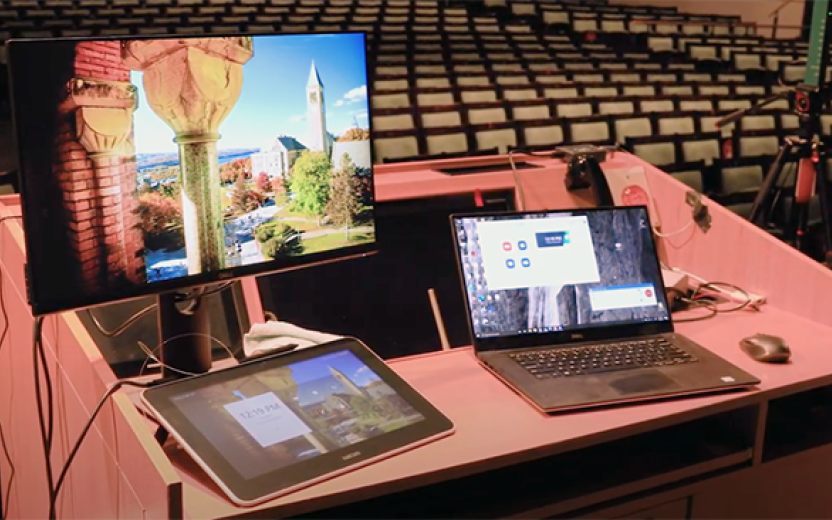The links on this page provide details on the use of specific equipment provided to instructors in recent years to support teaching at Cornell. Actual installations will vary among different classroom spaces.
For classroom technology support, find the appropriate contact for your teaching space in Classroom Technology Support Information.
The Center for Teaching Innovation (CTI) provides resources for faculty and other instructors who are developing strategies for how best to deliver their courses in ways that meet the university's hybrid teaching goals.
• Teaching Technology Resources
• Learning Technologies Resource Library
• Teaching Technology Resources
• Learning Technologies Resource Library


Comments?
To share feedback about this page or request support, log in with your NetID